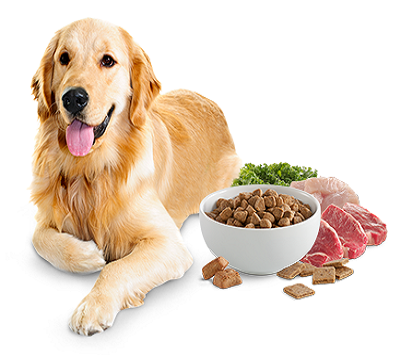In 2016, the size of the pet food industry was a whopping 24.6 billion dollars. By 2022, that number is expected to grow to over $30 billion. With so much money in the industry, you might expect that pet food manufacturers have the resources and desire to ensure that their products support your pet’s health and happiness.
That’s a reasonable assumption to make. After all, pet food makers should also want to keep owners happy, in order for profits to continue rolling in, right? Unfortunately, those assumptions aren’t accurate. The truth is, what you don’t know about pet food can hurt you. Worse, it can hurt your pet, who relies on you to provide high quality, nutritious food. Here is the truth about pet food and the pet food industry, that you need to know.
How the FDA Treats Pet Food
According to the FDA website, “The Federal Food, Drug, and Cosmetic Act (FFDCA) requires that all animal foods, like human foods, be safe to eat, produced under sanitary conditions, contain no harmful substances, and be truthfully labeled. In addition, canned pet foods must be processed in conformance with the low acid canned food regulations to ensure the pet food is free of viable microorganisms.” That sounds great, doesn’t it? It certainly sounds as though pet food is required to be just as good as human food. Especially, that part about, “like human foods.”
However, the text goes on to clarify that “There is no requirement that pet food products have pre-market approval by the FDA.” And in fact, ingredients such as meat, poultry and grains are considered safe and do not require pre-market approval,” the website states. So, in actual fact, pet food is not treated the same as human food. It falls under a different category, animal food. It should be clear to you now that the pet food industry is not regulated anything like the human food industry. Now, to be clear, the FDA is not turning a back on pet food industry practices. It simply does not regulate the industry the same as it does human food. What this means for you, as a pet owner, is that you can’t assume anything when it comes to choosing pet food and feeding your pets.
Why Are There So Many Brands of Pet Food?
If you browse the aisles of any pet supply store or the supermarket, you’ll notice that there are hundreds of pet food brands. More seem to be appearing on the shelves everyday. Why is this? Well, there are a lot of reasons.
1. There’s a lot of money to be made.
Pet food makers know that it’s a multi-billion dollar industry. Pet owners are more than willing to shell out as much as they can afford on what they perceive as premium pet food brands. Even celebrities have gotten in on the action. Rachel Ray, a well-known animal lover, now has her own line of pet food, and the Newman’s Own brand of pet food has been around for a while.
2. There’s little regulation.
As mentioned previously, the FDA regulations regarding pet food are a whole lot less strict than they are with human food. It’s relatively easy to get a line of pet food on the market than it is, say, to get a new line of soup on the market. As long as the food is relatively edible, a new pet food brand can sell to the public without any FDA pre-approval at all.
3. There are many niches to be filled.
These days, many pet owners are apt to seek out pet food that satisfies their own dietary concerns. Pet food makers are savvy marketers. They’ve developed new brands labeled as organic, gluten-free, vegan, vegetarian, kosher, holistic, and more. Each new product line must be marketed separately to avoid brand confusion, so manufacturers start new brands, even though they are owned by the same company. For instance, Nestle company owns Purina, Friskies and Beneful.
Are Designer Pet Foods Worth the Price?
It’s up to an owner to decide, along with vet recommendations, if it’s worth paying the higher price for so-called designer food brands. The fact is, most pet food is made with by-products. These are parts left over from the meat processing industry; parts that most humans wouldn’t exactly salivate over. That doesn’t mean they’re inedible, or even unhealthy. Bone meal, for example, contains abundant calcium. What it does make is cheap, inexpensive ingredients for pet food. Is it worth paying more for the designer label if the ingredients aren’t better? Maybe not.
What Else is in Pet Food?
It’s the secondary ingredients that are more worrying. Pet foods can contain lots of additives that could be harmful to your pet. These include things like fluoride, phosphoric acid, and propylene glycol. Propylene glycol is commonly added to dry pet food to inhibit bacteria growth, which is good, but it could also kill the good kind of bacteria inside your pet’s gut, which can lead to intestinal and digestive problems. Phosphoric acid is often added to cat food to achieve optimal levels of acidity, which is good, but it has been known to contribute to bone loss, which is detrimental. Fluoride is a controversial ingredient in human water, as well as in pet food. Since fluoride is a by-product of the making of fertilizer, one has to wonder if any benefits are worth the risk of adding it to pet food.
The thing you need to realize about pet food is that it isn’t government regulated like human food. Most brands of commercial pet food contain by-products of other industries, as well as some questionable additives that may be harmful to your pet’s health. The best thing you can do as a loving pet owner is to read labels carefully. Stick to the brands you trust. Keep an eye on your pet for any warning signs that their diet might need to be changed. And always consult with your vet when considering a new brand of pet food.

